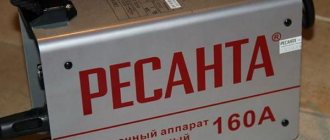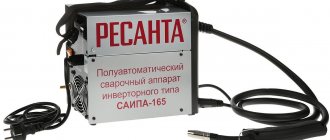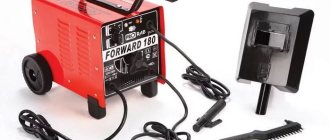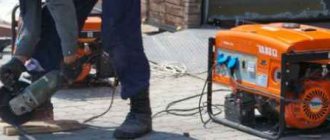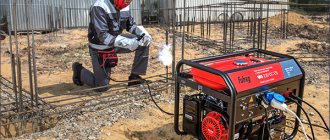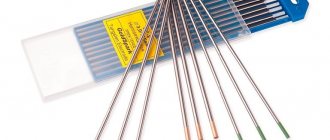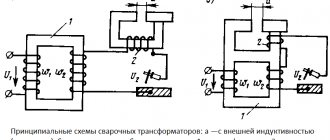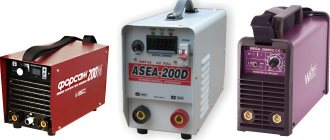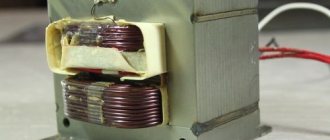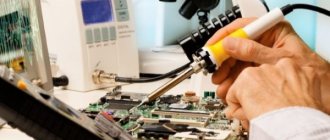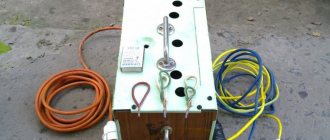How to choose OKOF for your welding machine
Reading time: ≈4 minutes
Any equipment wears out sooner or later, no matter how high-tech it is. This is especially true for welding machines, since it is used very intensively and in difficult conditions. In production, this point is taken into account and depreciation is calculated in advance so that money can be allocated for repairs or replacement of equipment.
It does not matter what equipment you use for welding - an inverter or a semi-automatic machine. In any case, you need to know which depreciation group the welding equipment belongs to. Previously, for these purposes it was possible to use the All-Russian Classifier of Fixed Assets (OKOF) from 2014, but in 2021 the database was updated.
In this article we will tell you what OKOF is, why it is needed and what code to choose for your welding machine in 2021.
Welding machine OKOF
A selection of the most important documents upon request (regulatory acts, forms, articles, expert consultations and much more). 330.28.4 It follows from the Decision that based on the results of a desk tax audit of the Applicant based on the tax return submitted by him for the property tax of organizations for 12 months of 2012, the inspectorate in the Decision, taking into account the All-Russian Classifier of Fixed Assets, approved by the Resolution of the State Standard of the Russian Federation dated December 26, 1994 N 359, it was concluded that the Company unlawfully reduced the tax base for the property tax of organizations on the basis of paragraph 6 of Article 376 of the Code by the value of the property specified in Appendix No. 1 to the Decision (mowers (road, rotary), crushers (rotary), snow blowers (manual), tabletop drilling machines, welding machines, air conditioners, NX-200 radios (carryable in the kit), NX-700K radios (digital in the car kit), medical carts, patient trolleys (with mattresses), transport chairs, defibrillators , wheelchairs for movement at the airport, cars, trucks, electric vehicles, tractors, trailers, hydraulic lifts, scales "WT 150L-MF", chainsaws, reinforced safe-type cabinets, couches, chairs and medical beds, medical cabinets with a safe, benches 4-seater, key boxes, trash cans, ashtray bins), since the specified property objects are not air transport infrastructure structures.
Question: In order to meet its own needs, a municipal institution has concluded an agreement, the subject of which is the purchase of a gas welding machine necessary for carrying out repair work. Which article of the economic classification of expenditures of the budgets of the Russian Federation should include the costs of paying for the specified agreement?
The welding machine (OKOF code 330.30.20.31.117) is assigned to the third, fifth, seventh or ninth depreciation group, depending on the technical and operational characteristics of the object, as well as the manufacturer’s recommendations. The document is available: in the commercial version of ConsultantPlus
Depreciation of fixed assets: what is it, groups of fixed assets, methods of calculation in accounting in 2021
This concept comes from the Tax Code of the Russian Federation in order to correctly determine income tax.
According to the rules, it is established by each subject independently at the moment of starting to use the product.
During this, it is imperative to take into account the OS classifier. The period may subsequently change as the enterprise may improve and modernize the facility. But the new period must be determined within the existing depreciation group.
At this time, a new classifier is in effect, which came into effect in 2021. The process of establishing the time of use is carried out in several stages.
bukhproffi Attention! First, the OS group is established according to the OS classifier to which the object belongs.
What is OKOF code
The OKOF code is a combination of numbers that contains basic information regarding equipment used in production. All codes are contained in a database called the All-Russian Classifier of Fixed Assets. He is OKOF. At the moment, OKOF is the most commonly used classifier of fixed assets in Russia. It is used in many areas, including welding.
Why is the All-Russian Classifier of Fixed Assets and its codes necessary? First of all, for tax accounting, so that the correct taxation can be calculated. Instead of OKOF, many use KOS (Classifier of Fixed Assets), but OKOF is much more convenient. It is very detailed and detailed; there you can find a code for any welding equipment. With the help of OKOF, a shock-absorbing group can be easily selected.
If you keep tax records, then the OKOF code is simply necessary to find out the useful life of welding equipment. Without code, you simply will not be able to correctly form the tax base. The same problem occurs with an incorrectly selected code. This is not just a bureaucratic formality. By setting the wrong code, you will incorrectly calculate depreciation and will not be able to replace or repair welding equipment when necessary. So that you can avoid these problems, we will tell you which codes to choose.
Accounting for fixed assets in 2020
The Alpha healthcare institution purchased medical instruments: a clamp and a tonometer.
The institution will use the tools when providing medical services. The commission determined that the tools are an asset, the cost is confirmed by the invoice and contract. The cost of the clamp is 1600 rubles. (VAT included).
The useful life according to the manufacturer's instructions is six months.
This is less than 12 months, so the commission decided to include the clip in inventory.
The cost of the tonometer is 1850 rubles. (VAT included). The useful life is 36 months, which is more than 12 months.
The commission included a tonometer as part of the OS. Since the new year, the federal standard has introduced new principles according to which operating systems are united.
Now, instead of two groups “Non-residential premises” and “Structures”, one has appeared - “Non-residential premises (buildings and structures)”.
How to choose OKOF code
The first OKOF code database was developed in 1994 and has since been updated only in 2004. Also in 2008, minor changes were made. Over time, it became obvious that the base needed a large-scale update. Therefore, in 2021, the code base of the All-Russian Classifier of Fixed Assets was updated. This is evidenced by Order No. 458, according to which the modern OKOF database consists not only of previous editions of 1994 and 2004, but also of new codes.
But despite its recent update, the base has not become simpler or more intuitive. If you open the OKOF database and try to find the code for your welding machine, you will probably encounter difficulties. The fact is that the database is very large and even if you have basic knowledge in this area, you probably won’t be able to find the right code the first time. There are a lot of categories and there is a chance that you simply choose the wrong code.
We decided to help you and suggest two codes that will probably be suitable for most welding machines. You can safely use them in your work.
The first code is 330.28.29. It is suitable for general purpose welding equipment or for equipment that does not fit any code. This code is used most often.
The second code is 330.28.29.70.110. This code is suitable for welding equipment that is used in conjunction with solder (soft or hard), as well as for welding without the use of electricity.
How to choose a device
Due to the fact that the Protva range of devices is represented by only two modifications, the buyer’s task in choosing a suitable device is significantly simplified. He should focus only on the diameter of the couplings with which he will have to work. Considering the fact that the cost of “Protva” and “Protva TBD” is almost the same, many prefer to purchase the second modification, considering it more universal.
It is recommended to purchase equipment only from the manufacturer. The order can be made on the official website of the company. In this case, the buyer is guaranteed not only product quality, but also service. Self-repair will not always be successful, since the design of the device contains many electronic components that require professional diagnostics.
What it is?
Welding equipment is units and installations that serve as a source of energy for connection, depending on the mode of work . When carrying out electric welding, the connection is made by exposure to a high-power electric arc, which melts the surface of the workpiece and the filler material. The liquid metal is mixed in the weld pool and, after crystallization, forms a seam.
Gas welding equipment uses flammable mixtures of technical gases as a heat source. For their transportation, special cylinders are used, to which shut-off valves and a reducer are attached to regulate the pressure.
Over the period of existence of welding technology, many joining methods have been developed, depending on the approach to the joining process and the types of equipment used. The most common types of welding are:
- automatic;
- semi-automatic;
- argon;
- point;
- induction;
- termite;
- plasma;
- laser;
- contact;
- friction;
- reflow.
For each type of metal and alloy, there is an optimal joining method. In addition, the overall dimensions and thickness of the workpiece are important factors.
In addition to equipment for performing work, there are also accessories that play a supporting role. They are divided into two groups:
- Additive and auxiliary materials. This includes coated electrodes for manual welding, wire and rods for argon arc welding, flux for automatic operation and other materials. In addition, this category includes technical gases, both flammable and those that perform the function of protecting the weld pool.
- Tools and accessories. This group includes torches, electrode holders, pliers, gas reducers, hand guns, cooling modules and other devices.
You can download passports from us at:
- Pumping and compressor equipment;
- Pressing equipment;
- Welders;
- Gardening equipment;
- Drills, angle grinders, hammer drills, jigsaws, cordless tools and other power tools;
- Drilling, milling, grinding, thickness planing, turning equipment, etc.
All possible technical passports of machines are presented in good quality and contain both basic characteristics and circuit and installation diagrams, as well as detailed equipment. Reduce equipment downtime; with the help of our archives you can quickly identify and fix problems.
Main settings
The main technical characteristics of the semi-automatic PATON PSI 160.
As an example, let us consider the main characteristics of the equipment of welders working in manual mode. We are talking about transformers, rectifiers and a product of semiconductor technology - an inverter. With their help, you can connect most metals and alloys: from aluminum to stainless steel.
The most important parameters are:
- Voltage . For household appliances, this figure is 220 V. Industrial appliances operate from 380 V.
- Power consumption . An important parameter that determines the capabilities of the unit. The unit of measurement is kilowatt. The maximum welding current depends on the power.
- Duration of switching on . Shows the percentage ratio of the operating mode to the resting mode at maximum current levels over a ten-minute interval. For example, a duty cycle of 60% indicates that in 10 minutes the device will only work for 6 minutes. For transformers, this figure, as a rule, does not exceed 50-60%. Inverters demonstrate great endurance - their duty cycle varies in the range of 70-80%.
- Open circuit voltage . The higher this parameter, the simpler the arc formation process.
- Dimensions and weight . The convenience of placing and transporting the device depends on these indicators. A modern inverter can be easily moved around the site with the efforts of one person.
You should also pay attention to the operating requirements . An experienced specialist must know what cross-sectional wire should be used to ground the welding transformer. For most models, it is enough to use a copper cable with a diameter of 6 mm. A steel rod with a cross-section of at least 12 mm is suitable as an alternative material.
For industrial enterprises, devices with several welding stations are produced. In this case, it is necessary to connect a ballast rheostat to each post to adjust the current parameters.
General information about the manufacturer
Welding machines for sleeve welding of polyethylene pipes were developed and manufactured by Protva (Moscow). Our own warehouse in Moscow allows us to sell devices immediately after placing an order.
Despite the fact that plastic pipelines have only just begun to replace metal pipelines in certain areas, the AOST company began its activities back in 1995. In Russia it was the only manufacturer of equipment for welding polyethylene pipes. This situation developed until 2008. Uncontested leadership played into the hands of product promotion. Today, Protv’s devices are known in every region of the country.
( 2 ratings, average 5 out of 5 )
Depreciation groups of fixed assets: how to determine in 2020
The organization determines the useful life of a fixed asset in order to calculate depreciation in accounting and tax accounting. From 12 May 2021, accountants will apply the updated Classification of Property, Plant and Equipment. Let's tell you in more detail what has changed and how to determine depreciation groups in 2021.
We recommend reading: Benefits for Labor Veterans for Traveling on Public Transport in June in the KBR
The rotary pump code according to OKOF is 14 2912113. In the OS Classification, such a code, as well as subclass code 14 2912010 (centrifugal, piston and rotary pumps) are not indicated. However, it contains class code 14 2912000 (pumps and compressor equipment). It belongs to the third depreciation group (property with a useful life of more than three years up to five years inclusive). This means that the rotary pump must be included in the third shock-absorbing group.
New OKOF 2021
Using this classifier, you can find how many years you need to depreciate various fixed assets in 2021: a gas cutter, a loudspeaker, trucks, cars and other vehicles, various irradiators, cash registers, traffic lights, electrical equipment.
There are 2 types of such keys: direct and reverse. The name makes it clear how these keys are used. The direct key is a table of correspondence between the data from the old directory and the new one. And the opposite is a table of correspondence between the codes of the new directory and the old one.
Classification
Let's consider the features of the equipment used for various types of welding work, as well as methods of its classification.
Fusion welding
Fusion welding is a technology for creating permanent joints, which is characterized by thermal effects on the edges of workpieces . After the formation of a pool of molten metal, filler material is fed into it, designed to improve the quality characteristics of the future weld. At its core, the process is similar to casting.
The main types of cast welding are:
- Dugovaya . The most common group. When working in manual mode, various devices are used. There is a wide selection of inverters for household use, the main characteristics of which were discussed above. When welding in semi-automatic mode, working equipment can be divided into two categories: working and feeding. The first houses the power source, and the second is responsible for supplying filler material to the connection zone. Such work is carried out in a protective gas environment. Particular attention should be paid to automatic submerged arc welding equipment. Its main feature is that the work is performed fully automatically. The operator only sets the program. During operation, the automation independently selects the optimal parameters based on the situation.
- Electroslag . A relatively new technology, characterized by the use of exclusively automatic devices, the first samples of which were developed back in the USSR.
- Gas . The work kit includes a gas burner and a cylinder with a flammable gas mixture, which usually includes acetylene, propane, hydrogen and oxygen.
- Electron beam . The operating principle of the devices is based on the conversion of the kinetic energy of electrons into thermal energy.
- Laser . A laser beam is used as an energy source, which is focused on a given area using special lenses. Working equipment is expensive and therefore used only for industrial purposes.
- Termite . The operation of the equipment is based on the reduction reaction that occurs when magnesium is mixed with iron oxide. Magnesium, as a more active metal, reduces iron, which is accompanied by the release of a huge amount of thermal energy.
There is separate equipment for joining polymeric materials - polyethylene, polypropylene, polyvinyl chloride and other thermoplastics . Polypropylene welding machines are distinguished by the fact that they do not require any consumables. The pipes are connected using special couplings by heating the surface to the melting temperature.
Pressure
The following joining technologies have been developed for pressure welding:
- Spot . The most famous type of resistance welding. The working part of the equipment are rods made of copper or its alloy. The contact area is limited by the diameter of the electrodes, which transmit force from the welding machine, after which current is supplied to the contacts.
- Resistance . The operation of a resistance welding machine is based on the Joule-Lenz law, and specifically the thermal effect of electric current.
- Reflow . A highly specialized technology developed at the Paton Institute for the installation of large-diameter pipes under water. The connection process occurs automatically. The special design of the welding chamber isolates the joint from water.
- Friction . Friction welding equipment consists of a drive and a locking mechanism. Connections are made by heating, which is achieved by rotating one or two joined elements.
There are other types of pressure welding. These include seam, relief, ultrasonic, thermocompression and contact microwelding, but they are used in certain industries and are not widely used.
Coating
The following coating methods are known to improve the quality characteristics of the surface of parts:
- Gas-thermal . This method requires a gas burner operating with an acetylene-oxygen or propane-oxygen mixture, into the flame of which an additive material is supplied. It can be in the form of wire, rod or powder. The coating is applied under the influence of compressed air. This is how corrosion-resistant coatings made of nickel, copper, aluminum or iron alloy are applied.
- Vacuum . Most often, the method is used for processing small-sized parts in mass production. A distinctive feature of the technology is that the process takes place at low temperatures, which makes it possible to work with products that do not tolerate heat well. In addition, the equipment allows you to coat not only metal, but also plastic, glass or ceramic surfaces. At the same time, resistance to mechanical damage is much higher than with standard galvanic coating.
- Alloying . The protective coating is applied using special equipment operating manually or automatically. The equipment generates plasma-spark discharges, which are deposited on the workpiece upon contact with electrode rods. To increase the strength of products, hard alloys based on metal carbides are used as the material for manufacturing electrodes.
Certification, passport
The most stringent requirements are imposed on welding equipment. All domestically produced devices, regardless of the year of manufacture, are manufactured in compliance with the requirements of interstate GOST standards and other regulatory documents, which is confirmed by certificates of conformity.
All foreign-made devices, in accordance with legal requirements, are subject to mandatory certification.
Manufacturers are required to complete their products with a welding equipment passport and operating instructions containing instructions for the safe use of the devices, including grounding methods.
Equipment that, based on the results of the inspection, is found to comply with technical regulations, is marked with the unified product circulation mark “EAC”.
Check frequency
According to recent changes in legislation, uncertified equipment manufactured abroad must undergo periodic testing after 3 years . This applies to both used devices and devices located at the point of sale.
To initiate a check, you must submit an application of the established form to the certification center. You should pay attention to the service life indicated in the manufacturer's passport. In the absence of this, the estimated period of operation will be 6 years. It begins to accrue from the moment of commissioning.
When the equipment's performance is confirmed, its service life is extended.
Shock-absorbing group of the welding machine in
Machinery and equipment property with a useful life of over 5 years up to 7 years inclusive; electric motors for electric drilling rigs; crane electric motors Machinery and equipment property with a useful life of over 7 years up to 10 years inclusive internal combustion engines, except for engines for vehicles; AC electric motors with a power of 0.25 kW and above (except for special power and large-sized ones); special power electric motors; except for fixed assets included in other groups Transitional keys To transition from the old OKOF to the new OKOF, a direct transition key is used: OKOF OK 013-94 OKOF OK 013-2014 CodeNameCodeName 142919320Vacuum filters330.28.29Other general purpose machines and equipment. Having found it, you will see , which group this OS belongs to. If your OS is not named in the Classification, then you have the right to independently determine the useful life of this property, focusing on the service life specified in the technical documentation or the manufacturer’s recommendations.
Shock absorption groups
When registering, PF objects are assigned to a specific depreciation group. There are 10 of them in total; they are listed in the OS Classification by depreciation groups. The main criterion for combining units of property into any of the depreciation categories is the useful life (USI) of the object. It is determined by enterprises for each PF facility, based on the expected useful period, operating conditions and regulations governing the use of the property.
SPI is the main criterion for classifying an asset into one of the presented depreciation groups.
| Group | SPI property |
| 1 | From 1 year to 2 years |
| 2 | From 2 to 3 years |
| 3 | From 3 to 5 years |
| 4 | From 5 to 7 years |
| 5 | From 7 to 10 years |
| 6 | From 10 to 15 years |
| 7 | From 15 to 20 years |
| 8 | From 20 to 25 years |
| 9 | From 25 to 30 years |
| 10 | Over 30 years |
According to the general rules, the organization depreciates the received asset over the period of fixed income, determined by the Classifier (see table). If the company cannot find an object on the list, then the deadline is set based on the specifications of the asset or the manufacturer’s recommendations. If the asset is manufactured in a company, then the company’s specialists independently develop recommendations confirming the effective life of the asset. They are drawn up in any form. This may be an order from the manager or another document defining the PPI of the asset. Let's consider the characteristic features of property classified in each depreciation group.
Major global and Russian manufacturers
Here is a list of welding equipment manufacturers that have proven themselves on the Russian market:
- EWM . Leading manufacturer from Germany. This company is distinguished by innovative developments - back in 1988 it produced the first TIG AC/DC inverter.
- KEMPPI . A Finnish brand whose products comply with all European and international standards related to quality, ecology and safety.
- CEDAR . Domestic manufacturer specializing in the production of welding equipment and auxiliary tools. It has a developed network of service centers.
- SVAROG . A Russian brand whose production facilities are located in China. Compliance with the requirements of state standards is monitored by NAKS specialists.
- ESAB . A famous Swedish company that has been producing welding equipment and consumables for more than 100 years. One of the most reliable brands whose products are valued all over the world.
- BlueWeld . Another European manufacturer that appeared on the Russian market in 2002. Over the past time, it has established itself as a manufacturer of reliable and high-quality devices that meet the requirements of GOST, TUV and ISO 9001.

